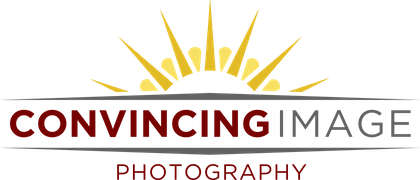LIGHT/FLASH POWER AND ITS IMPACT ON EXPOSURE

There are two ways to increase light power and brighten your exposure. The first is to move closer to the source and the second is to increase the light power.
This is strait forward when using a flash. I can ask the model to move closer to the flash, move the flash closer to the model, turn up the flash power, or add anther flash. Some consistent light sources allow you to turn up and down the power/intensity, while others can only be controlled by changing the light distance to the subject. Moving or turning up/down the sun is not an option, at least for me:-) To control sun light I have to choose the time of day, pray for clouds, utilize shade, or place a scrim (sheer material) between the sun and my subject.
The photograph above was taken with a Nikon D7000 and Nikon 70-200mm f/2.8 at f/14, 1/250 sec, ISO 400. A single flash, in a 24 inch soft box, was used on full power. The flash was held just out of the frame, but as close to the bride as possible. The small aperture of f/14 was used to create the sun star in the top left corner. As I was using a crop sensor camera, which does not handle High ISO as well as newer full frame cameras, I elected to bring the exposure up on the bride using as much flash power as I could get.
Adjusting light power by one stop is straight forward when just turning up the power on the flash/light. To increase light power by one stop, I double the power and to decrease light power by one stop, I cut it in half. Changing the flash power from 1/8 to 1/4 is an increase of one stop. Changing flash power from 1 (full power) to 1/2 is a reduction by one stop. If I add a second flash, at the same distance from the subject, both at full power, I have increased the exposure by one stop.
Unfortunately, adjusting light power in increments of stops by moving the light source closer to or further away from the model is not so straight forward. This is due to the inverse square law, which I won’t attempt to explore in detail here. From a practical standpoint, you need to understand that moving a light source double the distance from the model will not decrease the light by one stop. This is because the light spreads more as it gets further from the model and the spreading of the light deceases light power at a more rapid rate. If my light is 10 feet from the model and I move it to 5 feet from the model, my light power will increase by more than one stop. The math is more than I’m going to attempt during a photo shoot. If I have to move my light further from the model, I’m going to make other adjustments until it looks right (histogram, etc).
Conclusion to My Series of Articles on the Exposure Diamond.
I have to concede I don’t always think of changing my exposure in terms of stops of shutter speed, and half stops of aperture, etc. However, I do know that if I adjust my ISO down, I need to open my aperture up some, etc. Admittedly, I often just start spinning camera dials and make adjustments until my exposure/histogram looks right to me. I don’t carry a calculator in my camera bag and I’m not always doing the math in my head. However, I believe a photographer needs to understand exposure and how the various elements of the exposure diamond work together. In this digital world anyone can take a 1000 photographs and expect to get a few good ones. When you have even a basic understanding of how your camera works, the ratio of good, and even great, shots within that 1000 is bound to go up vastly.
I know it seems like a lot to remember, especially when paying attention to composition, distracting elements in the background, light patterns, expression, etc. In truth, it IS a lot to remember. Unless you’re much smarter than I (admittedly, many of you likely are), you’re not going to be able to simply read through an article like this and have it down. You need to put your camera on manual, pick up a cheap manual flash, light stand and umbrella then start shooting. I would suggest periodically reviewing this series of articles on the exposure diamond to identify where you can make improvements and corrections.
